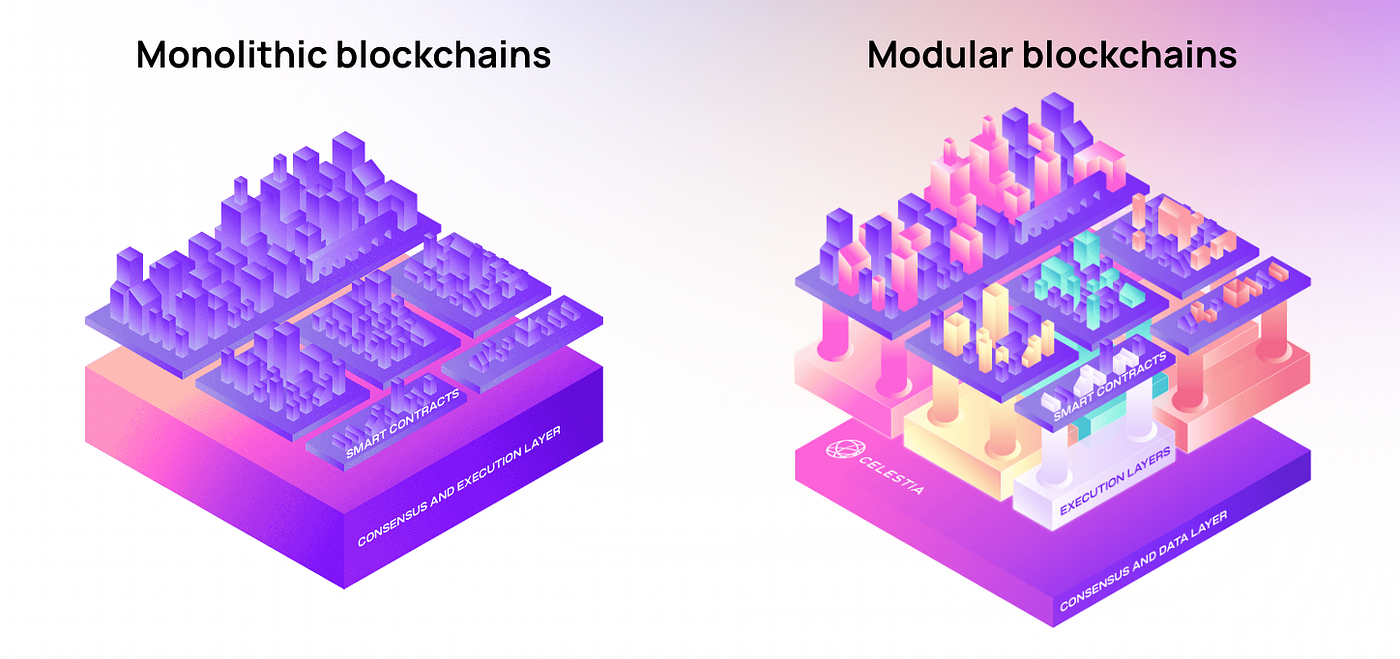The Proliferation of Modular Chains

The following is an opinion piece from 0xjim, cross-posted with his personal Medium blog. The following statements are not associated with the opinion of Catalyst.
In the future, there will be millions of chains.
Did I stutter? Not thousands, not ten thousands, but millions of chains.
CoinMarketCap currently marks the existence of 956 blockchains since the inception of Bitcoin 15 years ago.
That’s an average of ~64 blockchains per year — with the majority of them likely created in the 2017 ICO era or in the past 24 months (which we shall now henceforth call the alt-L1 era).
If we want to get to — say — 1 million chains in another 15 years, that means we need to hit gas pedal: 67K new chains per year on average, or a CAGR of 58.8% per annum.
That’s pretty absurd numbers. So why am I so confident in this statement?
Three certainties:
- The emergence of the modular blockchain stack
- Highly configurable chains
- Millions of applications in the future
The emergence of the modular blockchain stack
What was once a nascent idea proposed by Celestia over a year ago, the modular blockchain thesis has become a consensus borderline certainty within the crypto community.
As a refresher, the modular blockchain thesis separates the “job” of a blockchain into three parts: settlement, data availability, and execution.
As a result, it becomes easier and eventually trivial to stand up a new modular execution layer — leveraging the shared security of another settlement and/or data availability layer.

Highly configurable blockchains
In the future of millions of chains, some of them will be general purpose blockchains like Ethereum and alt L1s, but the vast majority of them will be application-specific.
Blockchains become so highly customisable that it becomes intuitive for an application protocol to be in their own environment.
Think about it — with its own chain, a dApp team can do the following:
- Alter and optimise gas prices for common opcodes
- Configure a different gas token
- Have data availability posted off-chain for lower transaction costs
- Not compete with others for blockspace
- Capture MEV occurring in the protocol
- Optimise consensus and execution for higher throughput (Narwhal+Bullshark, parallel execution via FuelVM)
For a large application like dydx, it makes sense to become its own application-specific blockchain — in order to have full control over the stack. In dydx’s case, they re-configured the base consensus mechanism in order to increase throughput.
Other app-chains like Sei have done a similar exercise in order to cater to HFT and other financial use cases.
Alright, we're going longform to explain why I and the @nascentxyz are long-term bullish on appchains.
— Dan Elitzer (@delitzer) September 29, 2022
How about we do it with a case study?
Presenting...
The Inevitability of UNIchainhttps://t.co/pMr3IkG9Ji
🧵
Millions of applications
This one is self-explanatory. If we’re building for mainstream adoption, eventually there will be millions of applications built on top of crypto platforms.
Each application will have their own dedicated instance in their modular chain.
Said differently — we’re entering the cloud era of blockchains, where modular chains are self-contained instances of unique, disparate application environments.
The recent announcement of Coinbase’s L2, Base, is a watershed moment for app rollups — as Coinbase made a clear commitment to building and migrating its own applications on-chain.
Most people (i.e., non-builders) don't realize the incoming tsunami of dapp teams looking to deploy their own modular chains
— Jim (@0xJim) February 23, 2023
The infrastructure is being slowly laid out for the next bull run
The Harsh Reality
I’m insanely bullish on the proliferation of blockchains, however I recognize the limitations of the underlying technology and nascency of builder demand.
As it stands right now, there’s a sizable hurdle for any development team to build their own application-specific modular chain:
- Connectivity and composability is lost when moving away from a shared state machine
- Existing infrastructure like RPC endpoints, block explorers, and wallets don’t work off the shelf, and running the infra on your own is cost intensive.
- Liquidity is fragmented, and a community needs to be built from the ground up. There’s no network efforts to inherit from an underlying base chain.

We need to overcome those barriers and make it a no-brainer for application protocol teams to build for the future — creating their own modular execution layer.

